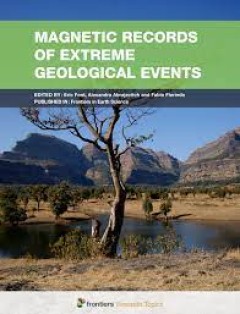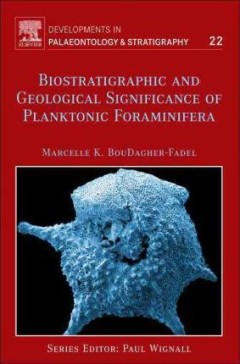Filter by

Advances in Marine Engineering: Geological Environment and Hazards
Submarine landslides have attracted widespread attention, with the continuous development of ocean engineering. Due to the recent developments of in-situ investigation and modelling techniques of submarine landslides, significant improvements were achieved in the evolution studies on submarine landslides. The general characteristics of typical submarine landslides in the world are analyzed
- Edition
- -
- ISBN/ISSN
- 9783036570563
- Collation
- -
- Series Title
- -
- Call Number
- -

Geologic map of Chase County
Relief shown by contours.Includes text, location diagram, and composite stratigraphic section.Bibliography.
- Edition
- -
- ISBN/ISSN
- 1588068900
- Collation
- 1 map :col. ;97 x 85 cm.
- Series Title
- -
- Call Number
- -

Magnetic Records of Extreme Geological Events
Life on Earth was punctuated by several dramatic paleoenvironmental and paleoclimatic changes leading to mass extinction linked to continental flood basalts (CFBs) and large igneous provinces (LIPs), global oceanic anoxic events (OAE), rapid climate and sea level changes and meteorite impacts. On a global basis, linking the mass extinction to LIPs volcanism has remained problematic due to insuf…
- Edition
- -
- ISBN/ISSN
- -
- Collation
- -
- Series Title
- -
- Call Number
- 551 MAG

Geological Structures: a Practical Introduction
This manual is about structures that occur within the Earth’s crust. Structures are the features that allow geologists to figure out how parts of the Earth have changed position, orientation, size and shape over time. This work requires careful observation and measurements of features at the surface of the Earth, and deductions about what’s below the surface. The practical skills you will l…
- Edition
- 1
- ISBN/ISSN
- -
- Collation
- -
- Series Title
- -
- Call Number
- 551

Biostratigraphic and Geological Significance of Planktonic Foraminifera
Foraminifera are marine, free-living, amoeboid protozoa (in Greek, proto = first and zoa = animals). They are single-celled eukaryotes (organisms the cytoplasm of which is organized into a complex structure with internal membranes and contains a nucleus, mitochondria, chloroplasts, and Golgi bodies, see Fig. 1.1), and they exhibit animal-like (cf. plant-like) behaviour. Usually, they sec…
- Edition
- -
- ISBN/ISSN
- 9781910634264
- Collation
- -
- Series Title
- -
- Call Number
- 570 BOU b
 Computer Science, Information & General Works
Computer Science, Information & General Works  Philosophy & Psychology
Philosophy & Psychology  Religion
Religion  Social Sciences
Social Sciences  Language
Language  Pure Science
Pure Science  Applied Sciences
Applied Sciences  Art & Recreation
Art & Recreation  Literature
Literature  History & Geography
History & Geography